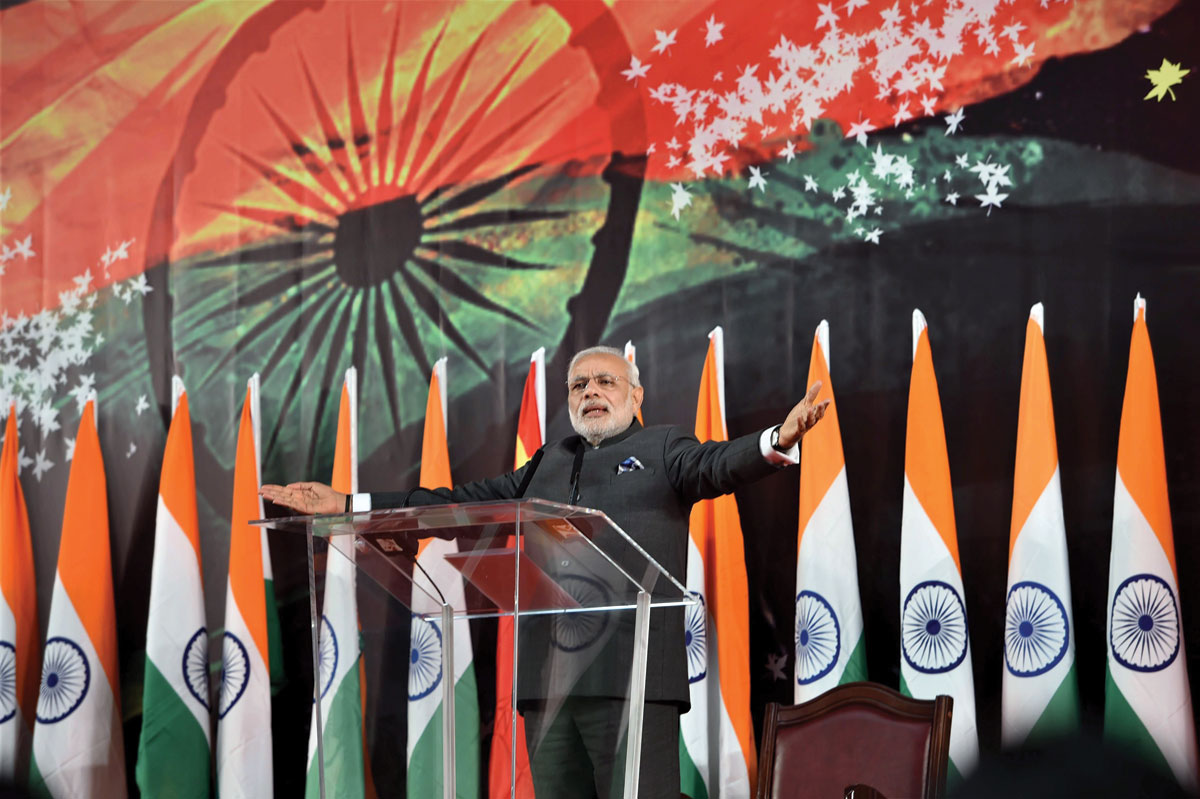ELEPHANT COURTS THE DRAGON
Prime Minister Narendra Modi addresses Indian community at a reception in Shanghai, May 16. (Shahbaz Khan | PTI)
Armed with the unthinkable agenda of establishing harmonious relations with the immediate powerful neighbor, Indian Prime Minister Narendra Modi set foot on Xian, the capital of Shaanxi Province in northwest China, on May 14. The three day maiden trip, a part of his three-nation tour (China, Mongolia and South Korea), was nothing short of establishing India’s credentials in conducting business with the world and of which China forms an integral chapter, writes Priyanka Bhardwaj.
The meeting of the leaders of the world’s most populous countries and fastest growing major economies brought forth a consensus on a series of issues reflected in the closing of 26 business agreements that measured up to $22 billion.
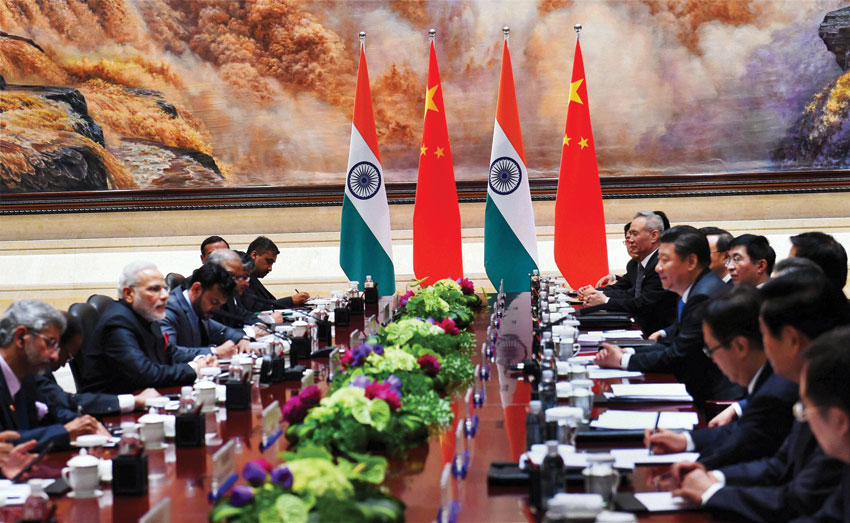
This is in addition to the $20 billion commitment made during Chinese President Xi Jinping’s India visit in September, last year.
The “Make In India” logo provided the backdrop of the Indo-China Business Forum where Modi and the Chinese President Xi Jinping ensured cementing of ancient cultural kinship of their countries.
The goodwill manifested in the conclusion of Memoranda of Understanding that touched a vast range of industries; renewable energy, vocational education, skill development, entrepreneurship, trade negotiations, external affairs, railways, education exchange program, health and safety, mines, broadcasting, tourism, policy making, earth sciences, earthquake engineering, cultural relations, yoga college, sister-city relations, sister-state/province relations and geosciences.
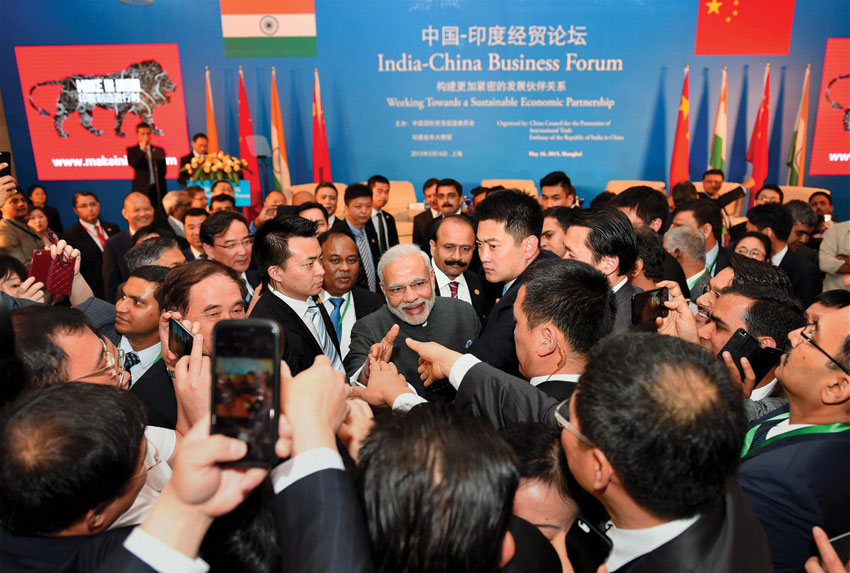
Modi assured the top twenty-two Chinese businessmen of his personal attention to facilitate their pursuits for flourishing Sino-Indian ties.
His words resonated, “All this is a historic opportunity for the Chinese companies. You would already know the direction of my government and the steps we are taking. We have committed ourselves for creating and improving the business environment … Many Chinese companies have the possibility of investing in India to take advantage of India’s potentials. The potential lies in manufacturing, processing as well as in infrastructure. I am here to assure you that India’s economic environment has changed. Our regulatory regime is much more transparent, responsive and stable. We are taking a long-term and futuristic view on the issues. Lot of efforts have been made and are still underway to improve the ‘Ease of Doing Business’.”
Accompanying Modi was a thirty-nine strong contingent of businessmen comprising Chanda Kochhar of ICICI and Rajan Bharti Mittal of Bharti Enterprises Airtel.
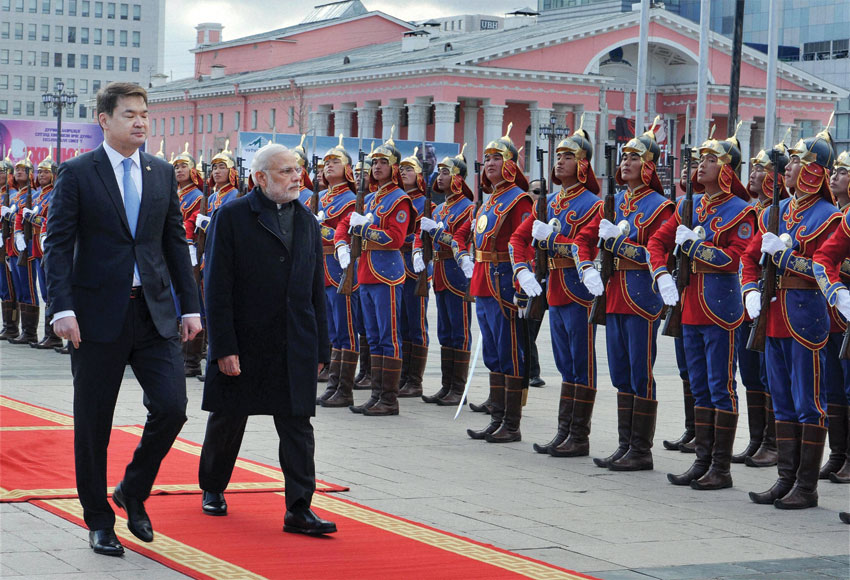
Being industry inclined and playing down border confrontations his emphasis lay on exploring viabilities in synergizing capacities of the world’s largest factory and back-office destinations, China and India respectively.
For his fellow countrymen Modi’s advice was to maintain patience and prepare to work long and hard, just as the Chinese did for a good three decades to reach their potential.
Economists give an ample chance to India, with $3 trillion GDP, to be able to surpass China’s growth by next year.
This presents an opportunity for the declining China’s growth story to forge ahead by penetrating Indian markets for Chinese exports.
A booming Sino-India trade notwithstanding, it remains tilted towards Beijing and India’s Foreign Secretary, S. Jaishankar remarks, “Where India has a very successful global footprint, but that footprint has not extended to China,” such as pharmaceuticals, information technology and some agricultural products.
Some like Kochchar of ICICI, however, view Modi’s offer to the Chinese a bit more optimistically.
Speaking to press persons she stated, “There is lot of complimentarily between Chinese and Indian businesses. And the present Modi government has taken lot of transformational steps for ease of business. And they are in the right direction. Our Bank already enjoys tie-ups with Chinese banks through correspondent banking relationships to meet the trade finance requirements of Indian companies and is aiming to scale up its presence in China.”
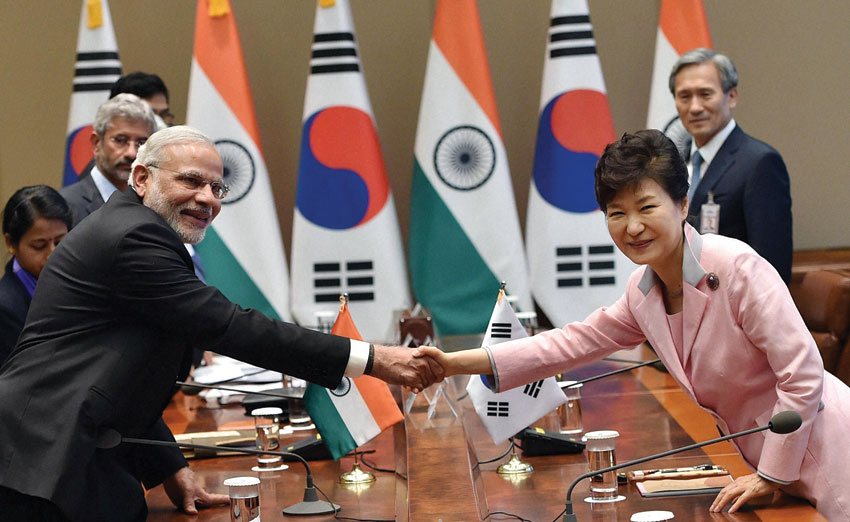
ICICI Bank, India’s largest private sector bank, with a presence in 17 countries and consolidated asset base of $132 billion, marked the upgradation of its Shanghai representative office to a branch of the bank on Modi’s visit.
To tap into these rising trade volumes between the two countries many public sector banks of India, SBI, UCO Bank, Canara Bank and Allahabad Bank, are already engaged in expanding presence in China.
However economic invigoration cannot be divorced from issues of security and strategic interests.
Realities of the two speeding economies vying for regional influence and China toughening its stance on territorial disputes, scaling confrontations and inching to cover South Asia with its political and military reach undermine any relations.
Disagreements over lines of actual control along the 3,500 km shared border present numerous hurdles and vivid memories of the disastrous defeat India faced in the 1962 war elicit domestic outcries to retaliate against China.
Mindful of these exigencies and to progress on commercial terms, cooperate and build confidence, a conciliating Modi and Li attempted to diffuse tensions at a press conference by agreeing to explore a “fair, reasonable and mutually acceptable resolution” to the issue.
Li insisted that the two countries had “enough political wisdom to manage and control differences which are far outnumbered by their common interests.”
Most likely Modi realizes that India has entered the mindshare of global economists, investors and big economies despite its fragile economy and image of being a tumultuous investing option, and is being wooed by the U.S. and Japan to counter the Sino-influence.
And therefore, his foreign visits and temporary discarding off of his image for adoption of flexibility, discrimination, and raising the ante of the country’s brand perception on foreign shores.
Sandeep Jajodia, chairman of Monnet Group, a leading Indian conglomerate in sponge iron, steel and power generation, who joined Modi in South Korea, on the last leg of the three nation tour points out that, “Successful foreign visits will augment bilateral ties especially after Modi has achieved leverage with the U.S., Japan and Australia and bolstered ties in the Indian Ocean and South East Asia. Plus one can view it as an effort in restoring credibility of decision-making process in India. As India needs foreign direct investment to grow exponentially, it has to attract it with a globally competitive business environment and rationalization of a number of issues that keep bothering the investors.”
In Seoul, Modi got India and South Korea to ink seven pacts, raising bilateral ties to the level of a “strategic partnership,” and in Mongolia, India extended its line of credit.
In negotiating similar achievements in the Sino-Indian affairs, without compromising on New Delhi’s economic and strategic interests, and in successfully overtaking China, an economic powerhouse almost five times of India, the urgent priority would be implementation of current resolutions which may in future create an environment for further resolutions.
